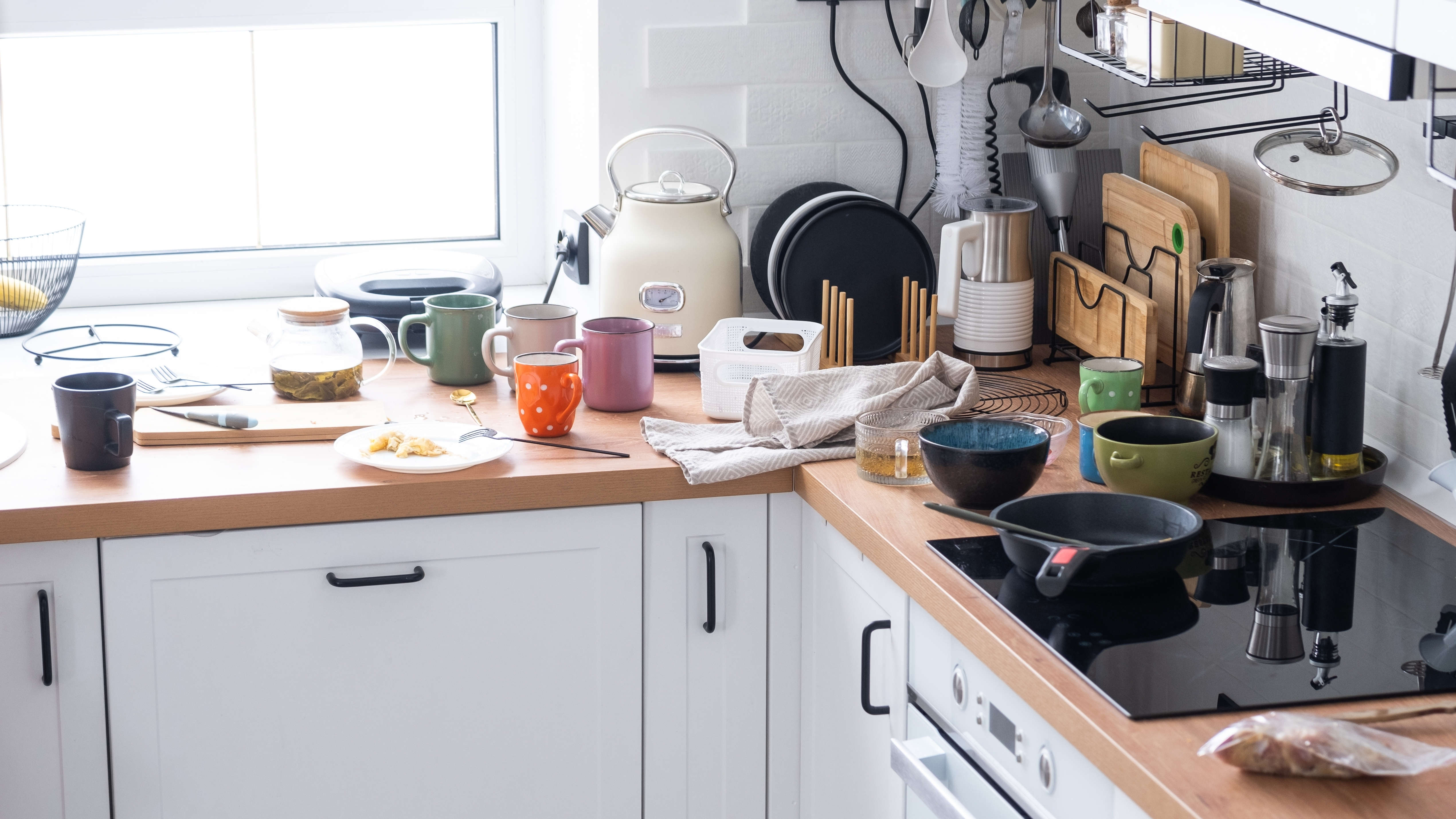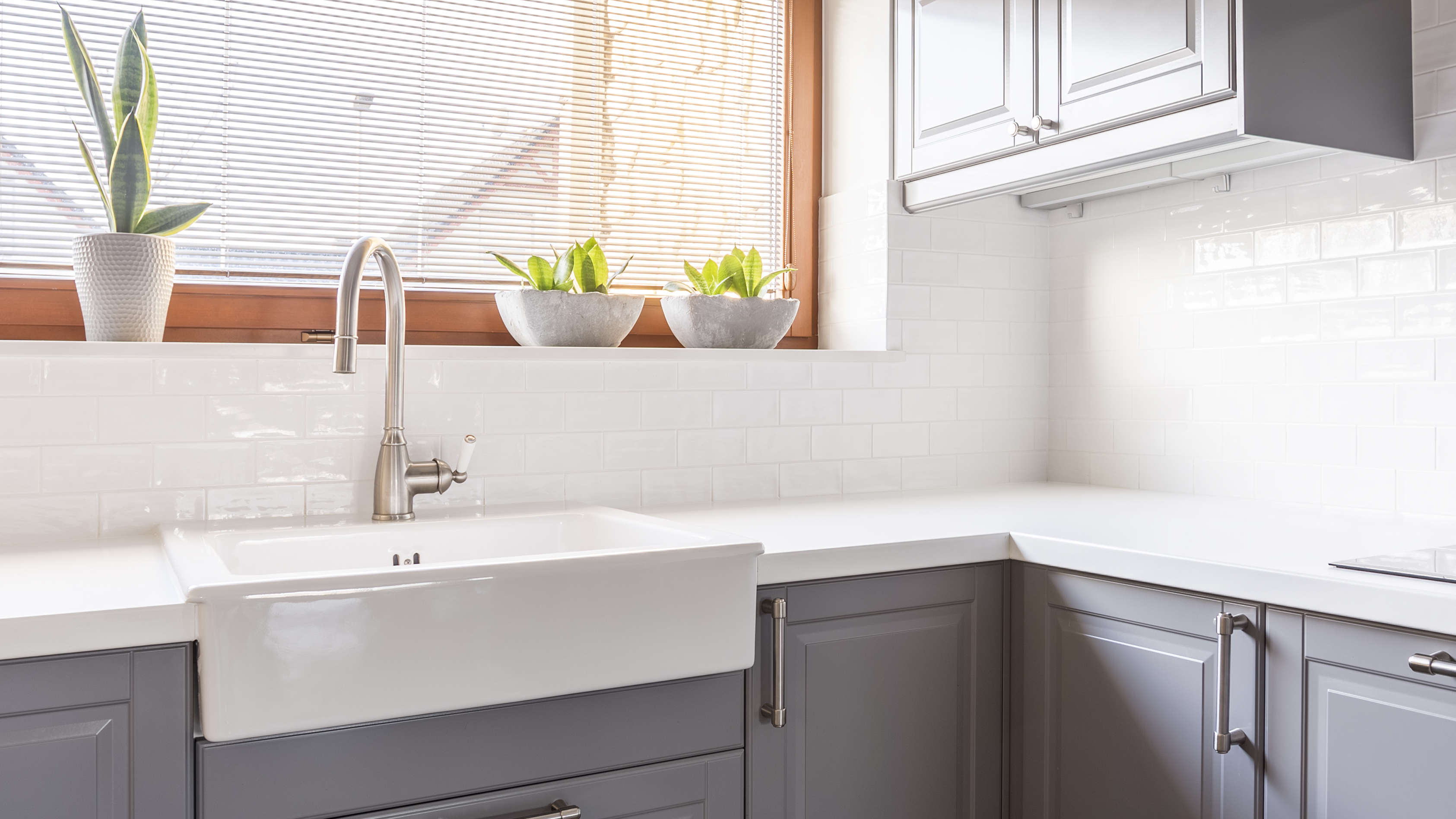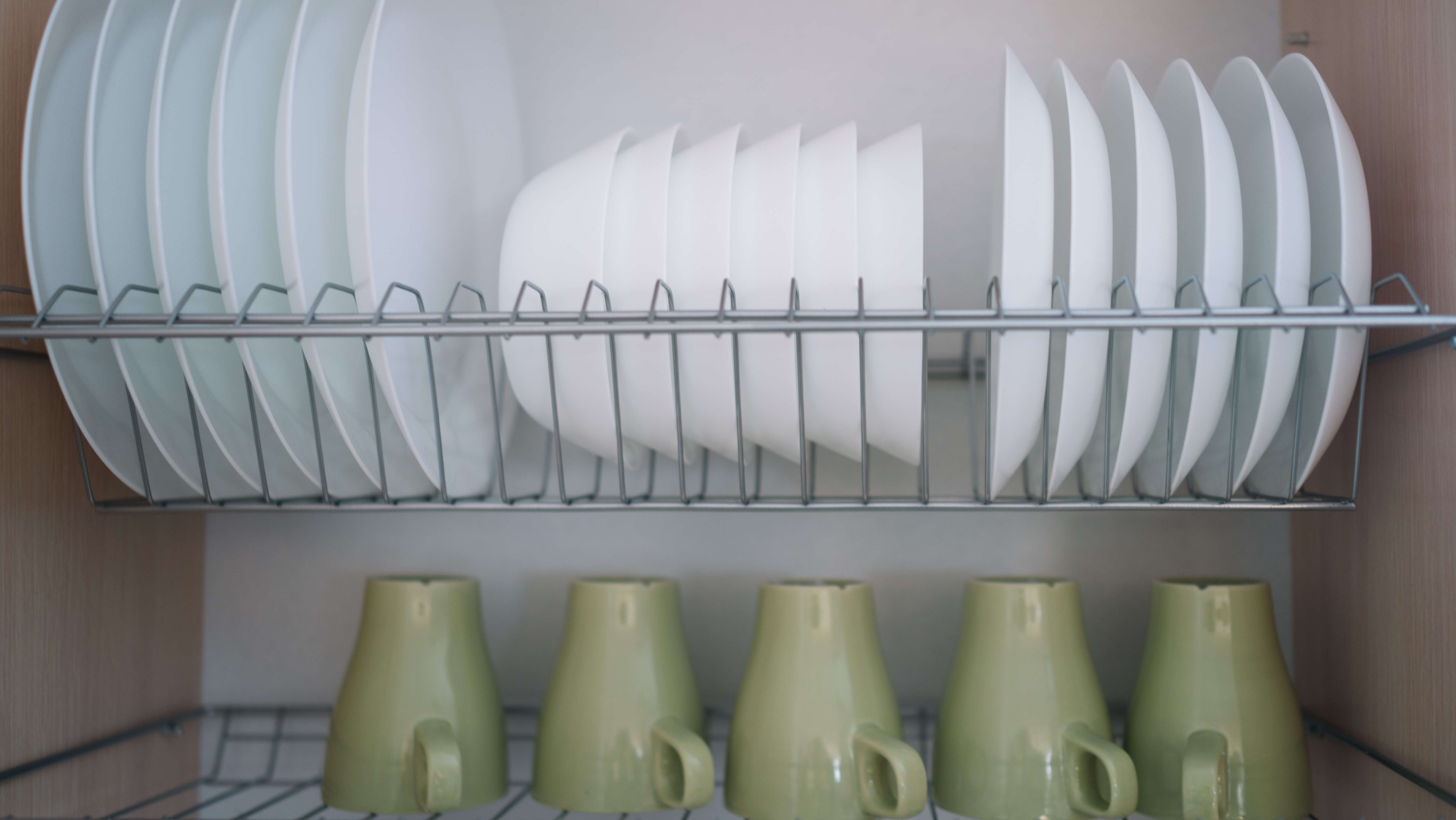7 ways to declutter your kitchen like a minimalist
Learn to clear your kitchen and throw away what you don’t need

Do you dream of having a kitchen that looks immaculate every time you walk into it? While a kitchen is a working, functional space, it can still look smart by removing everything you don’t need and following the minimalist approach to a simple, uncluttered space.
We’ll help you think like a minimalist in the kitchen — rather than facing bare walls and surfaces, our approach is to clear the clutter and learn how to let go of items you no longer need. Instead of facing a kitchen with crammed work surfaces and over-full cupboards, you’ll enjoy a calmer and more organized room that's easier to work in and looks more spacious.
Decluttering is also one interior design idea that can help improve your mental health. You might also be interested in reading How I reorganized my kitchen in a morning — discover my 9 quick and easy tips.
1. Change your dumping ground mentality

Whether you have a family or not, the kitchen can quickly become a dumping ground for lunchboxes, car keys, paperwork and many other miscellaneous items. So, apart from the usual paraphernalia in the kitchen, there’s lots more additional clutter that’s added daily. And if, like me, there isn’t a clear place to keep certain items, they get left on the side for several weeks. The top of my bread box is my favorite place to stash bits and pieces, although for others, it might be the refrigerator or a dining table.
Taking a disciplined approach will help you clear away that clutter. Find a spot near your front door for your keys, put used lunchboxes straight in the dishwasher, and eliminate that junk space. Within a short time you’ll develop new habits and hopefully have less ‘clutter’ to find a space for.
Remember that clutter attracts clutter. If you leave a room clutter-free, it’s less likely to encourage a crime scene of clutter in the future.
2. Tackle your work surfaces

It would be naive to think a kitchen can always look immaculate. Unless you rely on take-outs and rarely cook, the kitchen is a working room that often doubles as a social space. Be realistic about how much clutter you can clear from your countertops, without turning your kitchen into an impractical space that resembles a show home.
Sign up to get the BEST of Tom's Guide direct to your inbox.
Get instant access to breaking news, the hottest reviews, great deals and helpful tips.
However, decluttering work surfaces frees up working space, so when you come to cook, you’ve got plenty of room for food preparation and cooking. Imagine how much easier it is to work on a kitchen surface free of appliances used once or twice a year or utensil holders crammed with spoons, spatulas and ladles.
One approach to creating a minimalist look is to swipe everything off your work surfaces. Then, think about the appliances you use every day that you need close to hand. Other less frequently used items can be stored, sold or recycled if rarely used. And do some appliances cross over? For instance, do you have a standing mixer with attachments and a separate food processor, when one will do?
Is there a collection of food items on your counter? Fruit bowls, homemade cakes and beverage containers, can all be stored in a pantry and out of sight. As a baker, I’m much less tempted when my homemade bakes are behind closed doors!
3. Don’t waste the floor space

We don’t often think about the floor space when it comes to clutter in a kitchen, but this is one area that can interrupt a clear sight line, just like the surfaces. One of the most common items on the floor in a kitchen is a waste bin. While you can buy some stylish designs that provide a degree of eye candy, if you’re going for a minimalist approach, you’re best off attaching a waste bin to a cupboard below your sink and drainer. Whether this is an option when you buy a new kitchen or attach one after the event, it will help keep your floor clutter free.
4. Cut down on your equipment

How many spatulas and food tongs do you own? Have you got more pots and pans than you know what to do with? Have a serious cull of your cooking equipment and keep the best of the best. No one has ever needed two cheese graters.
And while you’re sorting through your equipment, also check your baking tins. I’ve recently ploughed through my piles of bakeware that were clattering down on me every time I opened the cupboard. And although I love a good individual Yorkshire pudding, I didn’t need three tins for the job.
What you get rid of will depend on your personal preferences in the kitchen. For instance, I rarely fry food (I haven't yet pulled the trigger on an air fryer), so I don’t need a large assortment of different-sized frying pans.
And when you replace an item, follow the one in, one out method, and don't hold onto the old item.
5. Check your crockery for cracks

Just as with cooking equipment, there’s no need to keep extra place settings when all you need is enough to see you through a day. So, swipe out those extra plates and dishes that you keep hold of ‘just in case’. And chuck out anything cracked — chipped dishes are unhygienic and shouldn’t be used. Then, if you have any plates that are marked and look scratched, given them a clean with this simple hack to smarten up your crockery to make it look like new.
Don’t forget to check through your mug and glass cupboard. In here, you’ll probably find a multitude of sins, from mismatched mugs to those given away as freebies. Ditch what you don’t need and clear that clutter.
While you’re looking through your cups, check out your water bottles. Despite only having three adults in my household, now that one son has flown the nest, I still have a shelf of bottles constantly tumbling over. One bottle per person should be fine to keep you hydrated at work and the gym.
6. Clutter-free cutlery

The cutlery drawer is one place that can become cluttered as knives, forks and spoons of different shapes and sizes are cast away into one big muddle, so you can never find what you need or know how much of anything you have.
Start by holding on to what you need and clearing out the rest. I keep one small and large knife and fork set for each person, plus a dessert and teaspoon. It’s also helpful to keep a couple of extra sets for guests. A drawer organizer is a must to help sort out your cutlery. Try this Simple Houseware expandable drawer organizer ($19 from Amazon) as a way of taming your cutlery.
7. Organise your pantry

One sure way of achieving a minimalist kitchen is to clear out your pantry and only buy what you need. It will also save you from overbuying and storing food unnecessarily, which may go out of date. Also, if you are within easy reach of a grocery store, there’s no need to hoard ten tins of your favourite tinned tomatoes. They’ll still be there when you go back next week.
While we all like choice, when it comes to a minimalist approach it's unnecessary to have five types of peanut butter all open at the same time, or even five types of peanut butter in general for that matter! Keep things simple and have what you love. When it comes to spreads, I opt for a crunchy peanut butter, honey and blackcurrant jelly.
Start by checking all the use-by dates on your products. Chuck out anything that is out-of-date and bring products to the front of your shelves that need to be used sooner.
One common area that gets overlooked is dried herbs and spices. Although these jars are often little and don’t take up much room of their own, it’s easy to gather a whole array of herbs and spices that go past their best through infrequent use! When trying a new recipe, rather than buying a new ingredient, think if you already have a herb or spice that you can swap.
Once you've decluttered you kitchen you might want to upgrade your kitchen cabinets without buying new.
More from Tom's Guide

Camilla Sharman has worked in publishing and marketing for over 30 years and has covered a wide range of sectors within the business and consumer industries both as a feature, content, and freelance writer.
As a business journalist, Camilla has researched articles for many different sectors from the jewellery industry to finance and tech, charities, and the arts. Whatever she’s covered, she enjoys delving deep and learning the ins and out of different topics, then conveying her research within engaging content that informs the reader. In her spare time, when she’s not in her kitchen experimenting with a new recipe, you’ll find her keeping fit at the gym. In the pool, stretching at a yoga class, or on a spin bike, exercise is her escape time. She also loves the great outdoors and if she’s not pottering about in her garden, she’ll be jumping on her bike for a gentle cycle ride.
